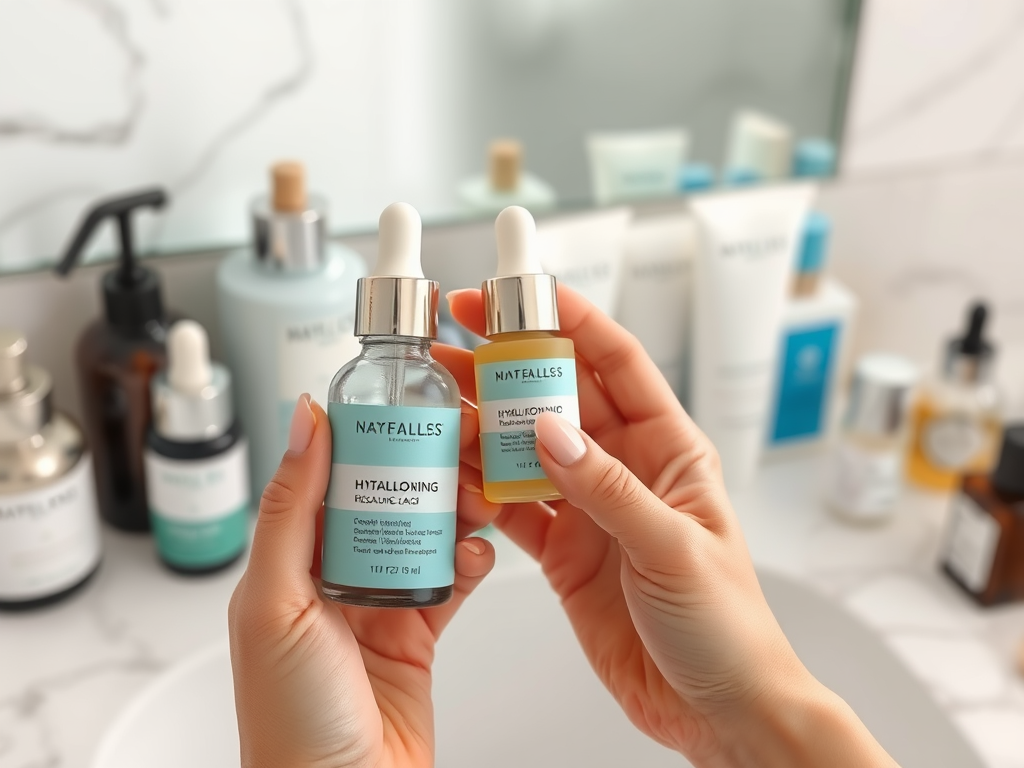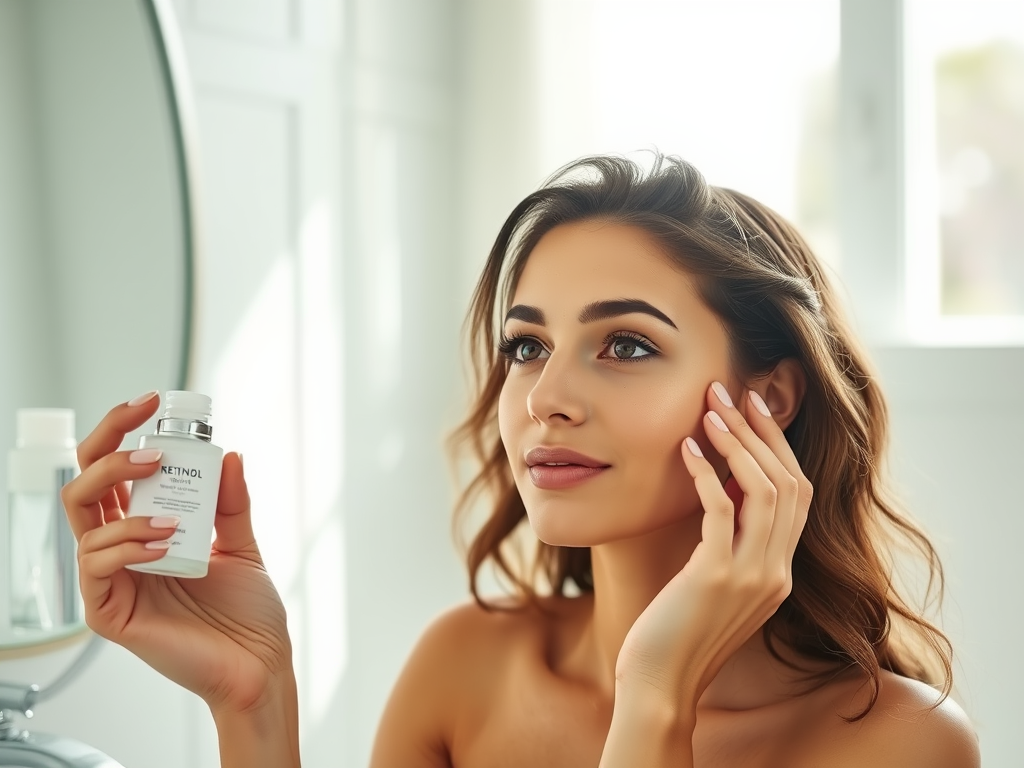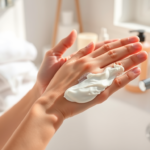When it comes to skincare, retinol and hyaluronic acid have emerged as two of the most talked-about ingredients in the beauty world. For years, these powerhouse compounds have been singled out for their remarkable benefits to the skin, but their individual strengths become exponentially more impressive when used together. This article delves into the intricate science behind how retinol and hyaluronic acid function, and why their partnership is a game changer for achieving radiant skin. Indeed, understanding their complementary roles can unlock a pathway to healthier, rejuvenated skin.
Retinol, a derivative of vitamin A, is often hailed for its transformative effects. It promotes cell turnover which is essential for maintaining youthful skin. However, the journey to understanding retinol’s full potential involves recognizing both its advantages and limitations. While it effectively combats fine lines, uneven texture, and acne, retinol can also lead to dryness and irritation, especially for beginners. Therefore, pairing it with a soothing and hydrating agent like hyaluronic acid can greatly enhance results. As we explore these ingredients, let us first examine retinol and its impact on the skin.
What is Retinol?

Retinol is part of the retinoid family, known for its ability to penetrate the skin and facilitate cellular renewal. Its primary function lies in encouraging the production of new skin cells while prompting the shedding of dead ones. This active ingredient works miracles for aged skin by significantly reducing the appearance of fine lines and wrinkles. Moreover, it promotes collagen synthesis, leaving the skin looking plumper and more youthful.
How Retinol Affects the Skin

The benefits of retinol extend beyond mere anti-aging effects. It plays a vital role in treating various skin conditions, including chronic acne and pigmentation issues. By regulating oil production and unclogging pores, retinol helps to alleviate acne breakouts and minimize the appearance of enlarged pores. As a result, skin texture improves, giving way to a smoother and more even complexion. However, it’s essential to note that retinol can be mildly irritating, particularly when first introduced into a skincare routine, which is where the soothing properties of hyaluronic acid come into play. To ensure an effective regimen, users need to be aware of both the benefits and drawbacks of retinol, thus we’ll elaborate more on that later.
What is Hyaluronic Acid?
Hyaluronic acid is a naturally occurring substance within the skin, primarily known for its exceptional ability to retain moisture. It can hold up to 1,000 times its weight in water, making it one of the most effective humectants available. This remarkable characteristic allows hyaluronic acid to keep the skin hydrated, plump, and youthful. Its unique molecular structure enables it to penetrate the skin’s layers, providing hydration at various depths. As a versatile ingredient, hyaluronic acid suits numerous skin types, making it a staple for many skincare routines.
Benefits of Hyaluronic Acid for the Skin
The advantages of incorporating hyaluronic acid into your routine are plentiful. First, its hydrating properties enhance skin elasticity, leading to a more youthful appearance. Second, its ability to soothe and calm inflammation makes it an excellent choice for sensitive or irritated skin. Here are some key benefits of hyaluronic acid:
- Intense hydration and moisture retention.
- Supports skin barrier function.
- Reduces the appearance of fine lines.
Additionally, hyaluronic acid can function harmoniously with various skincare ingredients. For instance, it can buffer the stronger effects of retinol as users incorporate it into their routines. This synergy confers a more balanced and hydrated complexion, thereby promoting overall skin health.
The Synergistic Relationship Between Retinol and Hyaluronic Acid
As we recognize the strengths of both retinol and hyaluronic acid, it’s crucial to understand their combined effects on the skin. When used together, retinol and hyaluronic acid create a synergistic relationship that maximizes the benefits of each ingredient. The inclusion of hyaluronic acid gradually counters the dryness that often accompanies retinol, thereby enabling users to enjoy the anti-aging advantages without enduring significant irritation. This balance transforms the application process, leading to healthier skin overall.
| Ingredient | Benefit | How It Works |
|---|---|---|
| Retinol | Cell Regeneration | Boosts turnover rate of skin cells |
| Hyaluronic Acid | Moisture Retention | Attracts and holds water in the skin |
To make the most of these benefits, it is key to incorporate both ingredients thoughtfully into your daily routine. Starting slowly is advisable, as some skin types might need time to adjust to retinol. Likewise, applying hyaluronic acid afterward can help combat any potential dryness.
Best Practices for Using Retinol and Hyaluronic Acid Together
For optimal results, consider the following tips when using retinol and hyaluronic acid. First, follow a simple layering regimen: apply retinol followed by hyaluronic acid to seal in moisture effectively. Start by applying retinol two nights a week, gradually increasing the frequency based on skin tolerance.
- Layering order: Retinol → Hyaluronic Acid
- Frequency: Begin with 1-2 times per week, then increase.
- Always use sunscreen during the day for protection.
Following this approach will ensure that you receive the maximum benefits of both potent ingredients while minimizing potential irritation.
Conclusion
The integration of retinol and hyaluronic acid into a skincare routine presents numerous advantages, particularly for those seeking to combat signs of aging while maintaining hydration. Understanding how each ingredient works and how they can harmonize allows individuals to create a potent and balanced regimen. If you take your skin type into account, there’s a substantial chance you’ll experience improved texture, tone, and overall health of your skin. Therefore, consider taking this innovative approach, as it could unlock the secret to the youthful and radiant skin you’ve always desired.
Frequently Asked Questions
- What is the difference between retinol and retinoid? Retinol is a type of retinoid; it is less potent, making it suitable for over-the-counter use, while retinoids can be prescribed for more severe skin issues.
- Can I use retinol and hyaluronic acid together? Yes, they can be effectively used together to enhance skin hydration while benefiting from retinol’s anti-aging properties.
- How often should I use retinol? It is generally recommended to start with applications 1-2 times a week and gradually increase frequency as tolerated.
- Is hyaluronic acid safe for all skin types? Yes, hyaluronic acid is suitable for most skin types, including sensitive skin due to its gentle hydration properties.
- Should I apply hyaluronic acid before or after retinol? Hyaluronic acid is best applied after retinol to lock in moisture and help counteract any potential dryness caused by retinol.


